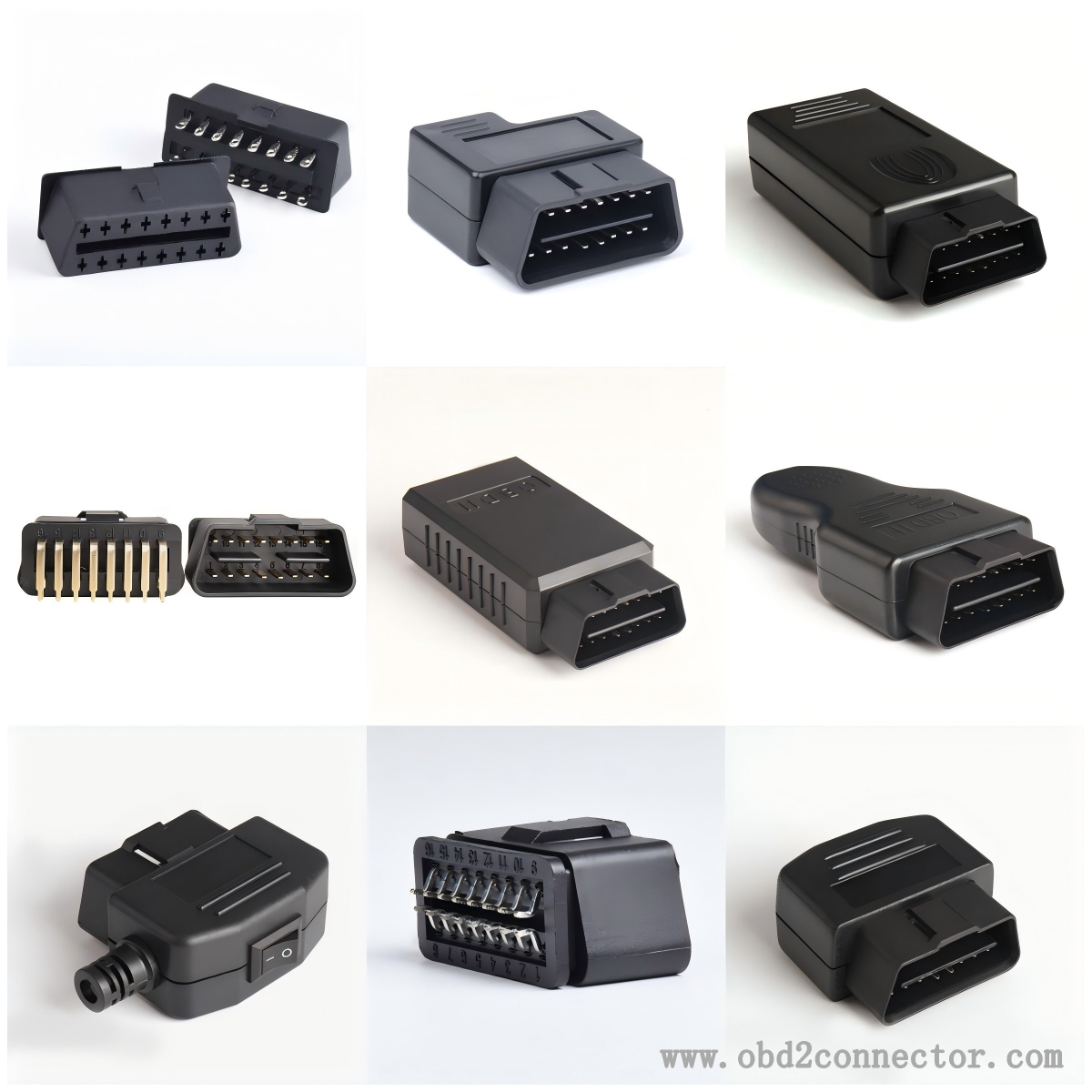How to choose the appropriate OBDII connector for your vehicle?
When choosing an OBDII connector that is suitable for your vehicle, you need to consider the following aspects:
Vehicle compatibility:
Verify vehicle brand and model: Some vehicle manufacturers may have special requirements or customization for OBDII connectors. You can refer to the vehicle manual or consult the dealer or manufacturer customer service to understand the types and specifications of OBDII connectors applicable to the vehicle.

Functional requirements:
Basic function: If only used for occasional reading of vehicle fault codes, the basic OBDII connector can meet the requirements. This type of connector usually supports standard fault code reading and clearing functions, which can help car owners understand whether the vehicle has faults.
Extension function: If you want to conduct more in-depth monitoring and diagnosis of vehicles, such as real-time viewing of engine speed, vehicle speed, water temperature, fuel consumption and other data, or perform some special function settings, such as maintenance light zeroing, throttle matching, etc., you need to select OBDII connectors with corresponding extension functions. Some high-end connectors may also support advanced functions such as vehicle performance adjustment and anti-theft system deactivation, but caution should be exercised when using these functions to avoid affecting vehicle safety and performance.
Communication protocol support: OBDII has multiple communication protocols. Different vehicles may use different protocols, with newer vehicles generally using the CAN-BUS protocol, but some older models may also use other protocols. The selected OBDII connector must support the communication protocol used by the vehicle, otherwise it cannot communicate and obtain data normally. Some high-quality connectors can automatically recognize and adapt to multiple protocols, making them more convenient to use.
Check product quality: Check the material of the connector housing, which should be sturdy, durable, fire-resistant, and moisture-proof to adapt to the complex environment inside the vehicle.
Connection method and interface type:
Wired or wireless: The wired OBDII connector is connected to diagnostic equipment or mobile phones through cables, with the advantages of stable connection and fast data transmission speed. The wireless connector connects to the device through Bluetooth or Wi Fi, which is convenient and flexible, and is not limited by cables. You can choose according to your personal usage habits and needs.
Interface type: The common OBDII connector interface has a 16 pin standard interface, which is suitable for most vehicles. But some special vehicle models may require the use of adapters or connectors with special pin definitions, such as some vehicle models that may require adaptation to specific diagnostic interfaces. When selecting, ensure that the interface of the connector matches perfectly with the OBDII port of the vehicle to avoid issues such as inability to insert or poor contact.